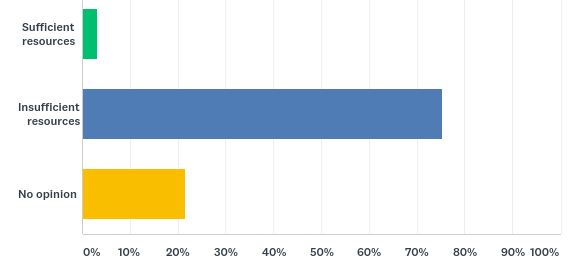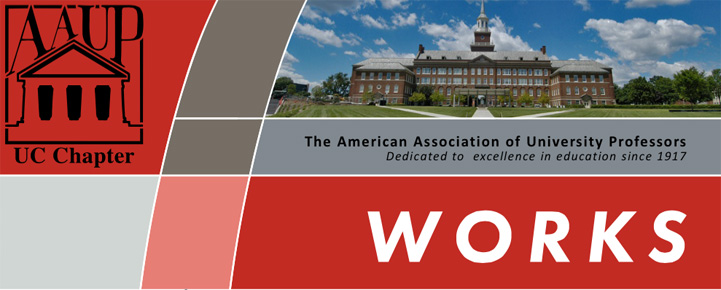Former Vice President Joe Biden stated, “Don’t tell me what you value, show me your budget, and I’ll tell you what you value.” The University of Cincinnati uses Performance Based Budgeting or PBB. If you understand PBB, and how it is used at UC, it becomes clear that the UC ‘s upper administration does not value faculty or the educational mission of this university.
Faculty have been hosting a series of teach ins focusing on PBB. (A summary of those teach ins and an analysis of PBB can be found here.) In short, in 2010 UC colleges kept 51% of the revenue that they produced. The remaining 49% went to administrative support and other services not related to the core educational mission. By 2017, colleges only kept 43% of the revenue they generated and 57% went to administrative support. In fiscal year 2017, if the colleges had kept 51% of the revenue that they generated—as they did in 2010—it would have resulted in an additional 52 and a 1/2 million dollars ($52,500,000) for the core education mission.
Alarms have been consistently sounding about PBB from many different corners of UC. Recently the A&S Faculty Senate issued a State of the College report that addressed PBB. The statement declared that “The Performance-Based Budget Model (PBB), as implemented at this university, lacks transparency, it is applied inconsistently across units, and it is incongruent with the mission of the university.” Further, “The way the PBB model is implemented does not allow a provost to partner with colleges to drive the strategic direction forward. Instead, several disassociated committees contribute to decision-making that is narrow in scope and without common strategies or goals.” Finally, “Cost-sharing with the Provost’s office has created a superfluous and redundant layer of administration, especially in the areas of business administration, HR, and marketing and communication….It is further aggravated by the lack of transparency about investments made by central units and the Provost’s office.” The entire A&S State of the College report can be found HERE.
It may be a somewhat rare occasion when the deans’ position is the same as the faculty, but that is the case with PBB. Budget Solutions from the Council of Deans (February 2019) documents the deansoncerns with PBB. It states, “As the Council of Deans have previously articulated in writing in 2017, and in 2018, there are a number of financial pinch points in the current performance-based budget (PBB) model which create significant challenges for the colleges. These financial pinch points remain in place currently and have only intensified over time.” It further discusses the latest implementation of PBB for FY2020, “Yet another cut means that we will lose staff and/or teaching capacity because cuts of that size must come from these accounts. These choices weaken our infrastructure to support students and the primary educational mission of UC.” The entire Budget Solutions from the Council of the Deans can be found HERE.
Students are also concerned about PBB. The UC News Record had an excellent article on the subject. It documented the substantial cuts to the core educational mission of the university, while the provost office had large increases in administrative personal and salaries, along with substantial bonuses. The News Record article can be found HERE.[i]
Finally, AAUP-UC’s survey, done in anticipation of contract negotiations, also found widespread concerns about PBB. In that survey, faculty were asked: In recent years, UC has converted to a Performance Based Budgeting system, commonly referred to as PBB. Would you say that PBB provides a sufficient level of resources to your unit, or do you think PBB provides insufficient resources to your unit?

Over 3/4 of faculty (75.34%) believe that PBB provides INSUFFICIENT resources to their unit.
Only 3% of faculty (3.12%) believe that PBB provides SUFFICIENT resources.
In the same survey, faculty were asked if UC has too few administrators, about the right number of administrators, or too many administrators. Seventy-one percent of faculty believe that UC has too many administrators.
Respondents were then asked if they agreed with the following statement: The current number of administrators at UC is necessary to maintain the quality of our academic programs. Only 13% of faculty agreed with this statement
Unfortunately, PBB is not an isolated incident of the UC administration neglecting the core academic mission. Earlier this year the provost and the president launched the Strategic Sizing Initiative (SSI). A goal of SSI is a dramatic increase in student enrollment. (Note that this is on top of a 14.9% increase in student Full Time Equivalencies (FTE) on the uptown campus and an 8.3% increase across all campuses from 2010 to 2017.) This initiative continues to generate questions as it was launched without faculty input and was not grounded in the principles of shared governance. The same trend also continues at the bargaining table, as the administration continues to put forth insufficient compensation proposals that do not bring UC faculty compensation into alignment with peer institutions, including those peer institutions repeatedly cited by the provost and the president as part of the SSI initiative.
It is unclear what it will take for UC’s upper administration to reevaluate its values and remember its core educational mission. The deans, the students, and the faculty are of the same thought, but this is not enough. If it were, there would already have been change. It may be necessary for the deans, the students, and the faculty, to move past concerted thought to concerted action in order to effect real change here at UC.
[i] Data from AAUP-UC was used in the Budget Solutions from the Council of Deans and in the News Record article.
